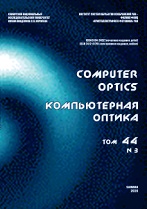|
This article is cited in 3 scientific papers (total in 3 papers)
NUMERICAL METHODS AND DATA ANALYSIS
The basic assembly of skeletal models in the fall detection problem
O. S. Seredina, A. V. Kopylova, E. E. Surkova, S.-C. Huangb
a Tula State University
b National Taipei University of Technology, Taipei 106, Taiwan
Abstract:
The paper considers the appliance of the featureless approach to the human activity recognition problem, which exclude the direct anthropomorphic and visual characteristics of human figure from further analysis and thus increase the privacy of the monitoring system. A generalized pair-wise comparison function of two human skeletal models, invariant to the sensor type, is used to project the object of interest to the secondary feature space, formed by the basic assembly of skeletons. A sequence of such projections in time forms an activity map, which allows an application of deep learning methods based on convolution neural networks for activity recognition. The proper ordering of skeletal models in a basic assembly plays an important role in secondary space design. The study of ordering of the basic assembly by the shortest unclosed path algorithm and correspondent activity maps for video streams from the TST Fall Detection v2 database are presented.
Keywords:
skeletal model of human figure, pairwise similarity, activity map, featureless pattern recognition, basic assembly, convolutional neural networks
Received: 18.05.2022
Accepted: 01.09.2022
Citation:
O. S. Seredin, A. V. Kopylov, E. E. Surkov, S.-C. Huang, “The basic assembly of skeletal models in the fall detection problem”, Computer Optics, 47:2 (2023), 323–334
Linking options:
https://www.mathnet.ru/eng/co1131 https://www.mathnet.ru/eng/co/v47/i2/p323
|

| Statistics & downloads: |
| Abstract page: | 21 | | Full-text PDF : | 10 | | References: | 12 |
|




 Contact us:
Contact us: Terms of Use
Terms of Use
 Registration to the website
Registration to the website Logotypes
Logotypes







 Citation in format
Citation in format 
